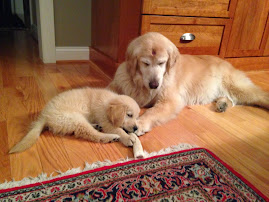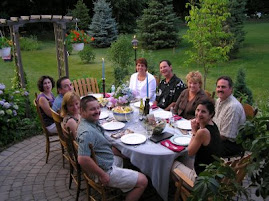Have you ever been to a vertical wine tasting? Often winemakers will hold back some of their wines for their wine "library". The library wines can then be accessed for special events such as the Vertical Tasting on Sunday at Heart & Hands Wine Company. At a vertical, you are able to compare different vintages side by side. The Heart & Hand's vertical of their Brut Rose included the 2007, 2008, and 2009 vintages. Winemaker Tom Higgins had tasting notes available with information about the vintage season, which Pinot Noir clones were used and his tasting notes from when each was opened Sunday morning. He paired the Roses with Strawberry shortcake (and whip cream - yum) which really brought out the berry flavors in the sparkling wine.
Before I tell you about each vintage, I think a short course in Champagne and Sparkling Wines is in order. For a wine to be called Champagne, it must be made from either Chardonnay, Pinot Noir or Pinot Meunier grapes grown in the Champagne region of France. Since Heart & Hands is in Union Springs NY, they must call their wine Sparkling Wine. HOWEVER, Tom uses the Champagne METHOD (or Traditional method) to make his Sparkling Wine. The Champagne Method is labor intensive, takes longer and is more expensive than other methods used. In the Champagne Method, the final blend of the still wine is bottled with a small amount of wine, sugar and yeast. A secondary fermentation occurs in the bottle which can last up to 3 months (to get those bubbles). Then the bottles are stacked with their necks pointing down and are turned at regular time intervals. In the degorgement stage, the bottle necks are plunged into a freezing solution which freezes the bottle around the sediment (which has traveled to the neck). The bottle is turned upright, the cap popped, and ice and sediment shoot out. Lastly, the bottle is topped with a reserve wine and sugar combo, re-corked and further aged. Using the Champagne Method generally produces a higher quality sparkling wine, and Tom is all about quality.
So - the 3 vintages:
2007: A hot and dry vintage. Dijon Pinot Noir Clones were used. This is important as these clones are from Burgundy and used to make still wines (such as Pinot Noir). The wine was a slightly darker shade of pink than the other two due (according to Tom) to thicker skins on the grapes. This sparkling wine was described by Tom :" Raspberry opens up on the nose leading to ruby red grapefruit, cranberry-raspberry-orange muffin". It was really really good with the strawberry shortcake!
2008: This was a normal vintage. The Pinot Noir clones were Champagne clones (from the Champagne region of France). Tom described it as "Plum skin and delicate floral notes open up to grapefruit and freshly mowed straw supported by a firm backbone."
2009: This vintage was cool and moist. Again Champagne clones were used. Tom's description:" Hints of candied cherries enter the nose followed by a ripe cherry burst on the palate with a touch of dried cranberry tartness on the finish."
All were really good and while there were commonalities among them, each had subtle differences that distinguished them depending on the taster's palate! Needless to say,we purchased the 2009, which is currently in the tasting room. But get some soon, because it won't last long.
New releases also available in the tasting room now are the 2010 Dry Riesling (108 cases produced) and the 2010 Riesling (226 cases produced). Other wines available for tasting are the 2009 Pinot Noir and the 2008 Barrel Reserve Pinot Noir (which is out-of-this-world).
P.S. Thank-you, Tom, for graciously signing a bottle of the Reserve Pinot Noir for Jim to give a friend who is retiring.










